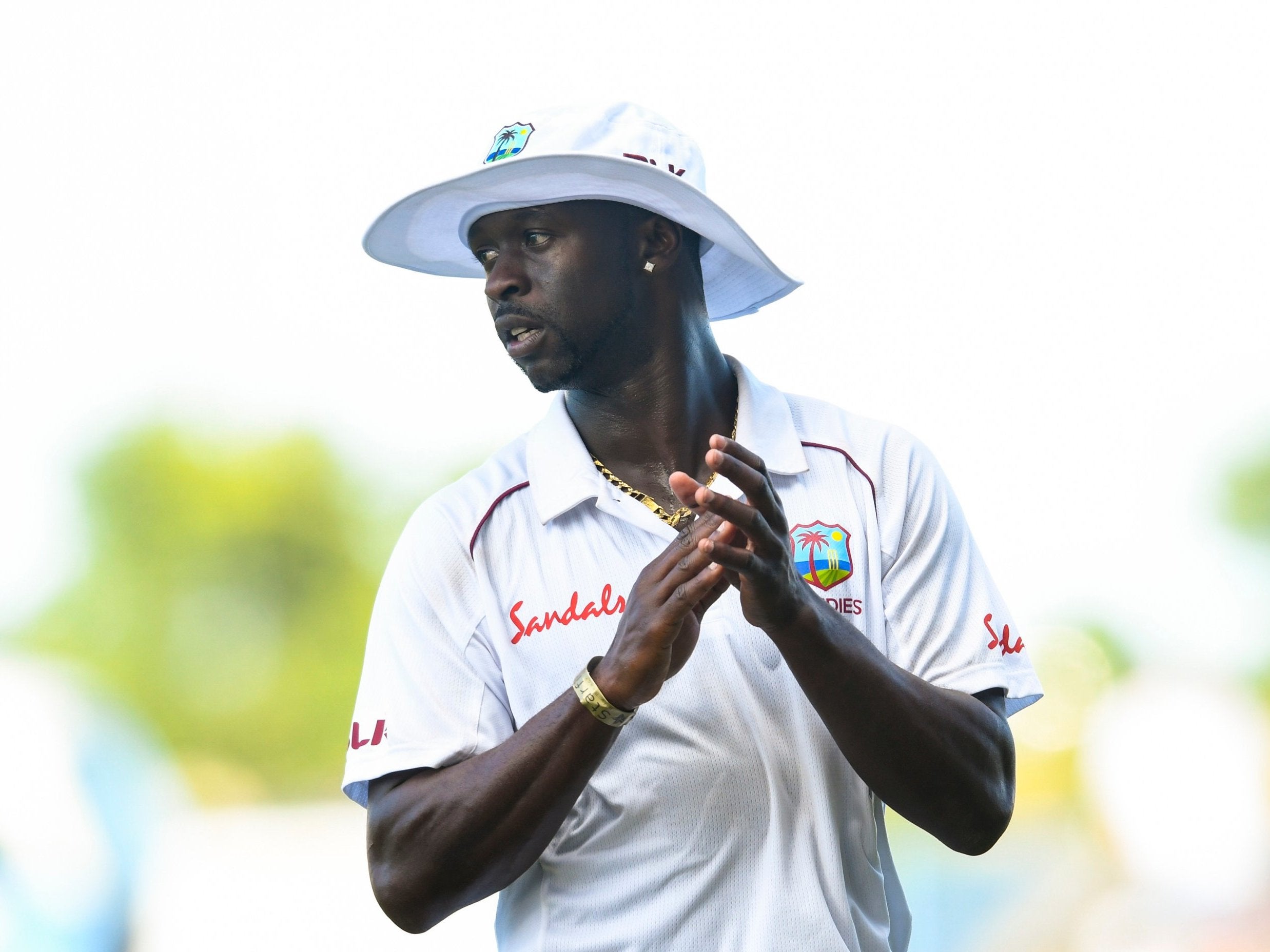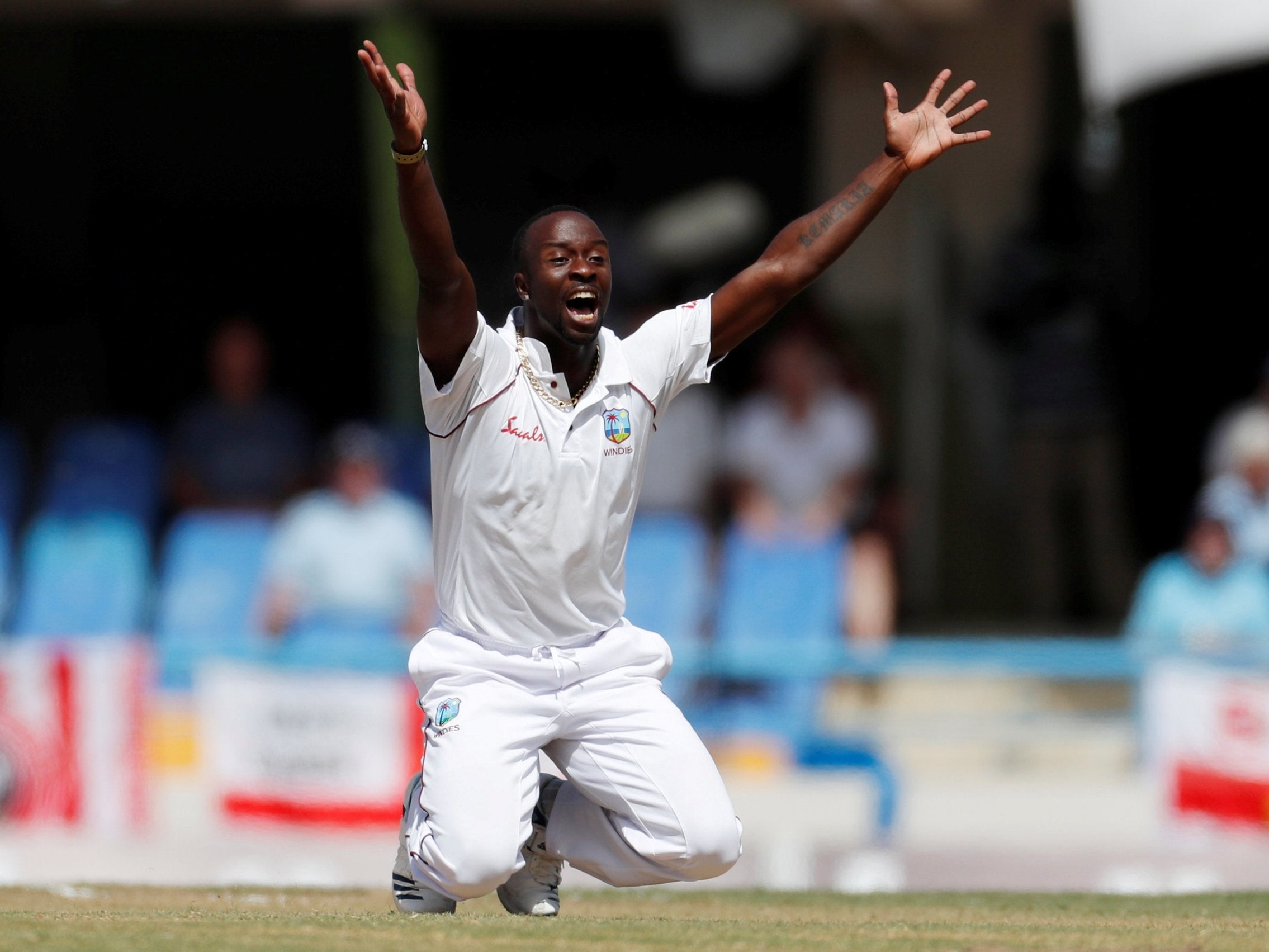West Indies vs England: How refined Kemar Roach has swapped pure speed for skill to torture tourists
Roach has proven himself to be the best quick in a generation for the Windies and is proving as effective as ever after bouncing back from 18 months away from Test side

Your support helps us to tell the story
From reproductive rights to climate change to Big Tech, The Independent is on the ground when the story is developing. Whether it's investigating the financials of Elon Musk's pro-Trump PAC or producing our latest documentary, 'The A Word', which shines a light on the American women fighting for reproductive rights, we know how important it is to parse out the facts from the messaging.
At such a critical moment in US history, we need reporters on the ground. Your donation allows us to keep sending journalists to speak to both sides of the story.
The Independent is trusted by Americans across the entire political spectrum. And unlike many other quality news outlets, we choose not to lock Americans out of our reporting and analysis with paywalls. We believe quality journalism should be available to everyone, paid for by those who can afford it.
Your support makes all the difference.The ball is short, and rising fast: almost as if it has gained speed off the Perth pitch. Ricky Ponting gets into position to play the pull, as we have all seen him do a thousand times: foot towards the ball, ready to rock back and heave it behind square. Only, about halfway into this process, he realises it’s not quite going to plan.
What was an elementary four runs is now a race for survival. The ball is reaching him much, much faster than he was expecting, and in the fraction of a fraction of a second before it arrives, Ponting manages to swivel his head out of the line of danger, but that’s about all he can do. Still rising, the ball thuds him in the left elbow.
The area of contact could scarcely be more agonisingly catastrophic. Ponting has been hit at the very point where the tendons are attached to the bone. Internal bleeding begins almost instantly. His arm muscles go into spasm and he can no longer hold his bat. He will later describe the moment as “unsettling”. After being seen by the team physio, he reluctantly walks from the field. Ponting is one of the most resilient men in the sport. He has played Ashes Tests with broken fingers. Now, for the first time in a 14-year Test career, he has retired hurt. The year is 2009, and the bowler is a 21-year-old tearaway called Kemar Roach.
---
A decade later, Roach is bowling against England at Antigua. He’s the only survivor from that West Indies team. He no longer brags about tipping 95mph on the speed gun. He no longer gets fined part of his match fee for bowling beamers. He no longer charges into the wicket with the crazed abandon of a young man who eats, drinks and breathes pace. What he does do, with increasing regularity and at rapidly decreasing cost, is take wickets.
He takes four more here, for just 30 runs, in 15 overs. Last week, in Barbados, he took 5-17 in 11 overs. Since returning to the West Indies side in the summer of 2017, he has taken 53 wickets at an average of 22 and moved into the top 10 West Indian Test wicket-takers of all time. The day he maimed Ponting in Perth, he took 2-104 off 22 overs. The Roach of 2019 may be a slower and less basically thrilling bowler than he was a decade ago, but there’s no question he’s a better one. Quietly, along the rails, Roach has evolved into one of the greats of 21st-century West Indies cricket.
And buried within Roach’s journey is a lesson in the feast and famine of professional sport, and how abruptly they can transmogrify into each other. Ponting, it’s said, was never quite the same player after being hit by Roach. Before it, he was averaging 55. After it, he averaged 37. Perhaps the decline had already begun to set in, but the “embarrassment” – his word – of being put in hospital by a 21-year-old kid alerted every fast bowler in world cricket that Ponting was now vulnerable to the short ball. But if Ponting was fundamentally changed as a player that day, then so – in a curious way – was Roach.
---
As 2014 dawned, Roach’s star was still in the ascendant. He averaged under 28 in Tests, his pace was still devastating, and though he had suffered an irritating shoulder injury in 2013, he had managed to get plenty of cricket under his belt. All that was about to change on a wet night in Barbados in 2014.
The roads north of Bridgetown are wide, winding and particularly treacherous in wet weather. Early one Saturday morning, Roach was motoring his BMW at his customary brisk pace when he lost control. It skidded off the road, flipped several times and landed in a park some distance away from where he was intending to park it, and without two of its wheels. Miraculously, he walked away with only a minor head injury. But perhaps the main legacy of his brush with death was psychological.

Roach was never quite the same bowler after the crash. He suffered an ankle injury on the tour of South Africa later that year. He had a dismal series against England in 2015. Then, on Boxing Day at Melbourne, he took the new ball against Australia, went for 15 in his first over, and was hauled out of the attack. Roach was dropped at the end of that tour and not seen against in West Indies whites for another 18 months.
---
The Roach who returned to Test cricket at Lord’s in the summer of 2017 was strikingly different from the bowler who had left it. For one thing, he was the veteran of the team, 29 years old. Age had slowed him down, but it had also given him a certain wisdom. “The more injuries you get, the more the body wears out,” he said. “I had to bowl within myself.” From his crash to his omission in 2016, he averaged 36. Since his return, he’s averaged 22.
But the relatively old hand had learned a few new tricks. He went back to domestic cricket with Barbados and performed well. He learned to use the crease much better, improved his command of swing and cut, worked especially hard on bowling around the wicket to counter England’s left-handers. It’s telling that the biggest influences on Roach as a bowler, from Malcolm Marshall to Corey Collymore to Ottis Gibson – even going all the way back to Alan Richardson during a short stint at Worcestershire – were not pure speed merchants but skilled craftsmen.
All four of Roach’s wickets on day one at Antigua were the result of a considered plan. To Rory Burns he steamed in from around the wicket, trying to angle the ball away, and taking the edge. With Moeen Ali, the plan was to bang the ball in and force him to play it at an uncomfortable height. To Sam Curran he tried to bowl on a good length with the occasional surprise lifter. And against dangerous Jonny Bairstow, he exploited a familiar weakness to full swinging deliveries on the stumps, nipping the ball in and trapping him LBW. Not the world’s most esoteric bowling plans, to be sure, but when you marry decent planning with good execution, soaring confidence and a helpful pitch, the results are often auspicious.

“Hard work in the nets,” he answered when asked what was the key to his transformation over the last 18 months. “I’ve had a lot of input and communication from the coaches. I’ve been working really hard in the gym. Running is incorporated in our training a lot. That’s helped my rhythm a lot. I’m getting older now, so I have to put work into my body. But right now, I’m in good stead.”
Where does he sit historically? Clearly he doesn’t yet belong in the very top bracket, with the likes of Ambrose and Walsh, Holding and Marshall, Garner and Croft, all of whom averaged under 25. Even so, Roach’s average of 27.7 puts him well clear of contemporaries like Fidel Edwards or Jerome Taylor. That feels about right: great not by the classic standards of West Indies fast bowling, but certainly the best to have emerged in a generation, and for a side that has been ailing for so much of that time, there’s something uniquely precious to that.
More importantly, he’s simply been there: from the darkest moments when they were putting out a second-string team to face Bangladesh because of a contract dispute, to their bright new dawn now. He’s still only 30 and has plenty of balls left in him. These days he doesn’t so much break arms as break spirits. Or, as he puts it: “Keep your areas, make the batsmen play as many balls as possible.” England, you suspect, can’t wait to see the back of him.
Join our commenting forum
Join thought-provoking conversations, follow other Independent readers and see their replies
Comments